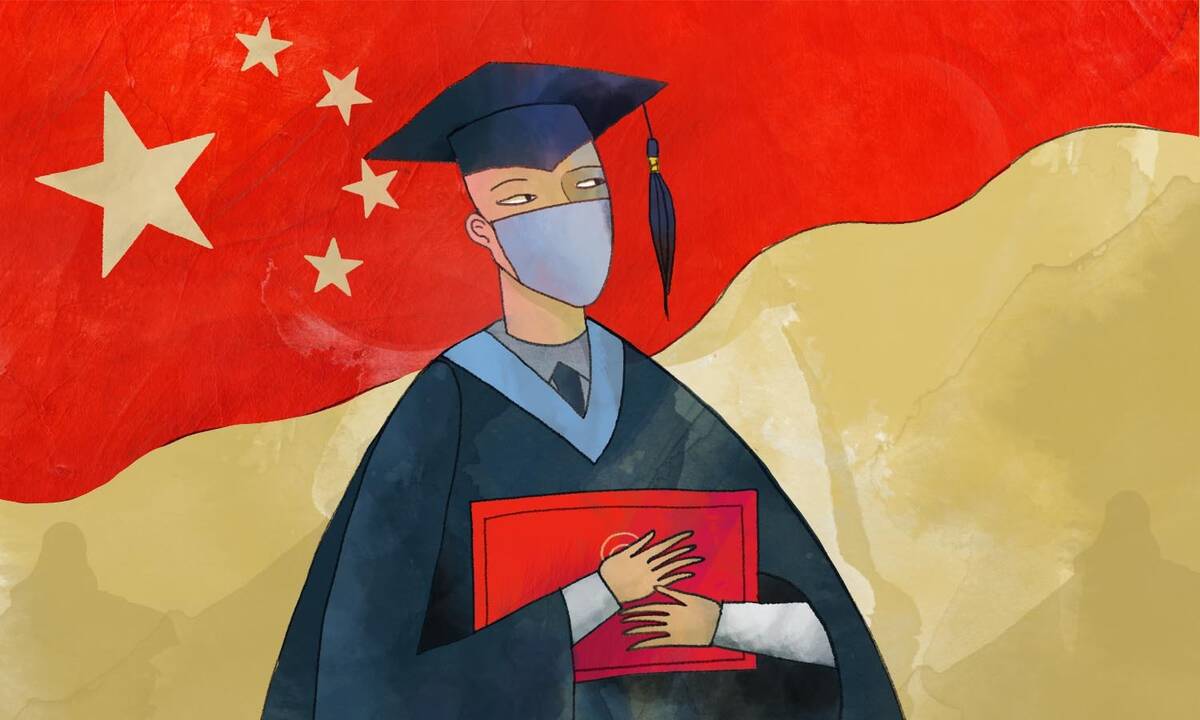Featured Faculty
James J. O'Connor Professor of Managerial Economics and Decision Sciences; (Center) Co-Director of the Global Poverty Research Lab (GPRL)

Yevgenia Nayberg
This month, China released official statistics showing that its unemployment rate for young people (16–24 years old) reached a record high of 20.4 percent in April. Worse, the news comes just one month before another 11.6 million students will graduate from college and vocational schools and enter the job market.
True, the lockdowns under the government’s zero-COVID policy were much more draconian and economically damaging than other countries’ containment policies, and they were enforced for more than a year longer in most cases. So, it is not surprising that China’s economic recovery has lagged others. For comparison, the U.S. youth unemployment rate hit 14.85 percent at its pandemic peak in 2020, before declining to 9.57 percent in 2021 and to 6.5 percent today.
But while most of China’s pandemic-related obstacles to employment have been lifted, the fundamental conditions for reducing China’s youth unemployment are not improving. While the long-run post-pandemic jobless rate will be lower than it is now, it is still likely to remain higher compared with the pre-pandemic years. There are many reasons for this, but one key issue is the large gap between the “reservation wage” rate that young graduates are willing to accept and the rate that firms are willing to pay.
This mismatch reflects the extent to which the cost of living has outpaced the growth in salaries. According to a 2021 survey, jobs for new graduates in big cities like Shanghai and Beijing paid an average of only CN¥5,290 ($749) per month. That is just enough to rent a 25-square-meter (269 square feet) apartment (Chinese cities now have some of the world’s most expensive real estate). And these young people can see that a job with such a low starting salary is unlikely to provide the income progression needed to support a family ten years down the line. Since urban white-collar workers are typically expected to work from 9 a.m. to 9 p.m. six days per week, a dual-career couple with a child must rely heavily on a nanny. Yet in Shanghai and Beijing, nannies, who usually come from the countryside and often have not graduated from high school, earn CN¥6,000 per month on average—more than recent college graduates.
One might wonder why recent graduates do not just move to smaller cities with lower costs of living. That is what many younger American workers have done, relocating from the San Francisco Bay area or New York City to the Sunbelt or the Rustbelt. But the analogous move for Chinese workers is much costlier, because the amenities in smaller cities tend to be substantially worse than in large cities (as is true of most middle-income countries). While some parts of Chinese first-tier cities feel more affluent than even New York or Tokyo, many third-tier cities still struggle to provide reliable electricity and basic sanitation (like private indoor toilets).
While most of China’s pandemic-related obstacles to employment have been lifted, the fundamental conditions for reducing China’s youth unemployment are not improving.
—
Nancy Qian
It is no wonder that most college graduates avoid moving to these more “affordable” areas. Instead, they rely on their parents to help cover basic costs. In 2014, a national survey found that around 30 percent of Chinese college graduates continued to live with their parents. But parental support is a double-edged sword when it comes to youth unemployment. While some young workers cannot get by without their parents’ support, others are choosing not to work precisely because their parents can afford to support them.
Young Chinese who were born in urban areas usually have parents or grandparents who own apartments in the city center, owing to the mass transfer of property rights from the state to residents during the 1990s housing reforms. And the one-child policy that was in force between 1978 and 2016 means that these young people have no siblings and thus stand to inherit prime real estate. If you are in this situation and your parents can cover your living expenses, why bother to work for a pittance?
China thus needs not only more jobs, but more high-paying jobs. That is a tall order for any economy; but China will face additional headwinds. For example, youth unemployment tends to cause other problems, such as increased crime and social and political instability. Research also shows that youth unemployment depresses lifetime earnings, because it means that young people are missing important opportunities to develop skills. In the United Kingdom, one year of unemployment at age 22 has been shown to depress wages by 13–21 percent 20 years later.
Prolonged, widespread youth unemployment can have profoundly negative long-run macroeconomic consequences anywhere. But it is especially a problem for China, now that it has one of the world’s largest and fastest-aging populations. The Chinese economy urgently needs new cohorts of highly productive workers to help sustain a rapidly growing elderly population. More than ever, Chinese policymakers need to focus on economic growth.
*
This article originally appeared in Project Syndicate.